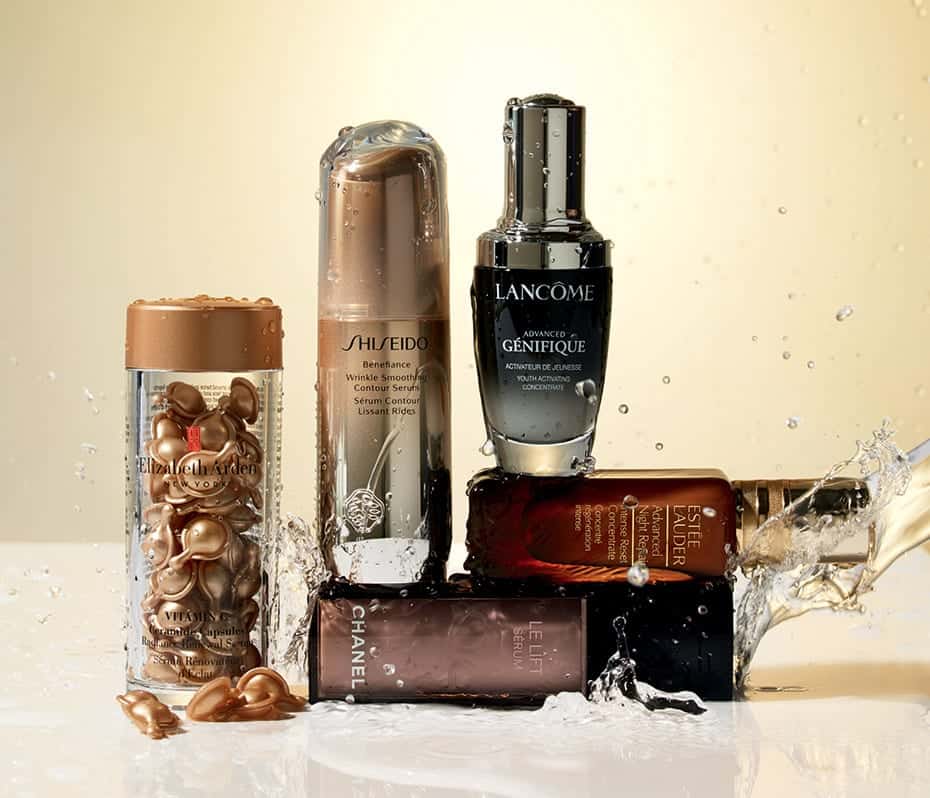We chat with the beauty experts and decipher how to create the perfect skincare routine to suit your skin goals.
Investing in products that will meet your unique skin requirements and goals is a start but deciding on which products you’re going to include in your routine is only half of the equation. Understanding how products interact with each, how they will address your skin concerns and how to apply them to get the best results possible is just as important. After all, there’s no point in spending money on skincare products if you’re not going to take the necessary steps to ensure the products are as effective as possible.
“Getting the most out of your skincare routine is more than just choosing the correct product, layering them in the right order matters too,” explains Dermalogica expert, Abby Hetherington. She explains that as a general rule, it pays to start with products that are lighter in texture – such as essences and serums – and then work your way up and finish your routine with products have the heaviest texture – for example, moisturisers or a leave-on mask.
Step By Step
But before you even reach for your first product with the lightest texture, whether it’s morning or evening you should be ensuring you cleanse your skin thoroughly first. Cleansing your skin in the evening after it’s been exposed to the day’s elements, pollution and make-up, is one of skincare legend, Paula Begoun’s unskippable beauty steps. “When you go to bed with makeup on, you risk waking up with irritated, blotchy skin plus bloodshot, puffy eyes,” she explains.
While we get much-needed sleep, our skin is busy working to rejuvenate itself. If you don’t cleanse your skin you risk interfering with this crucial process says Begoun. “The act of sleeping can push make-up deeper into pores, possibly leading to clogged pores and issues like blackheads and white bumps.” While double cleansing isn’t always essential, it can help to make sure your skin is thoroughly cleansed and ready for the next steps in your routine.
“Even a little make-up and sunscreen left behind at night is a problem,” she adds. Once you have cleansed your skin a hydrating toner can help refresh the skin and set a base for your targetted treatment serums explains Hetherington. “Toners add a layer of protection and helpt to bind moisture to the skin, meaning your serums and moisturisers will absorb easily,” she adds.

Layer Up
Leave-on exfoliators that have been formulated with chemical exfoliators such as Alpha-hydroxy acids and beta hydroxy acids are a smart addition to anyone hoping to achieve radiant, healthy skin through their routine. “Exfoliating is super important for two reasons,” explains MECCA Brands Skincare Retail Manager Lucy Shaw. “The first is that your skin needs exfoliation and the second is because it makes everything else work so much better. Your skin cells are constantly turning over, therefore, your skin needs to naturally exfoliate, shedding around one million cells per day.”
If you’re going to incorporate a leave-on exfoliator into your routine, Shaw says it is essential to always use your exfoliator after cleansing. Acids can make the skin more prone to sun damage, therefore it can be best to apply them in the evening rather than the morning. “Also, any water on the skin will dilute the acids, so I recommend you apply to dry skin.” Because acid-based products vary in strength, how they should be used often varies too. “I advise always reding the product application instructions as some can be left on the skin and some need to be rinsed off after a certain time,” explains Shaw. She says her own favourite tip for using a chemical exfoliator is to use it prior to a sheet mask. “I personally love to use a chemical exfoliant before I do a sheet mask as It helps to remove any skin getting in the way of my active ingredients and feels like a mini facial at home.”
Once you’ve cleansed and sloughed away dead, dry skin cells with an exfoliator, it’s time for your chosen serum – or serums. “A serum offers a targeted boost to your skincare regime and contains the most potent active ingredients to treat your main skin concerns,” explains Hetherington. Because it’s not uncommon to have more than one skin concern, many of us might decide to use more than one serum to target said concerns. Fine lines, wrinkles, acne, loss of firmness, texture, tone, dryness and even sensitivity are just some of the various skin issues many of us have that can be tackled with various serums. And while many serums these days are multi-tasking, there are still concerns that will need their own serum. Hetherington says the lightest-to-heaviest approach applies to serums too. “If you’re doubling up on serums, opt for your lightest weight first and heavier, oil-based serums on top.”
Finishing Touches
While it’s a common beauty myth that separate eye cream is an unnecessary addition to any skincare routine, the truth of the matter is that the delicate skin surrounding the eye is very different to the skin on the rest of the face. In fact, it’s up to ten times thinner, is put under stress frequently as we blink more than 10,000 times a day and is prone to dryness as there are fewer sebaceous glands in the area. Therefore, a skincare product that is formulated specifically for the eye area can help keep the area youthful for longer. Because the orbital zone – the skin surrounding the eyes – is that much thinner, it pays to gently tap a small amount of your chose formulation over the orbital bone. Avoid rubbing motions when applying skincare here as it can damage the delicate skin surrounding the eye.
While serums can address a host of concerns, most don’t specifically restore hydration to the skin which is why a moisturiser should be the next step in your routine. A great moisturiser should help your skin lock in hydration while addressing one of your primary skin concerns, for example, the signs of ageing. The weight of your moisturiser should largely depend on your skin type, says Hetherington, and your own personal preference. She suggests a lightweight option for those prone to oily skin and an emollient-rich nourishing moisturiser to enhance skin resilience and support barrier recovery for those with drier skin type. While it’s perfectly fine to use the same moisturiser both morning and evening, our skin goes into overdrive when we sleep and night moisturizers are formulated with active ingredients that boost the skin’s own nighttime recovery process.
If it’s a new day that is ahead of you rather than bed, Hetherington says that SPF should be applied as your last step every day. “Don’t be fooled by cloud cover, the sun’s harmful UV rays are always present and ready to cause skin damage,” she says. “A high SPF moisturiser will offer vital protection during the day.” Besides, there’s no point letting the sun undo all the hard work of the prior steps in your skincare routine.






